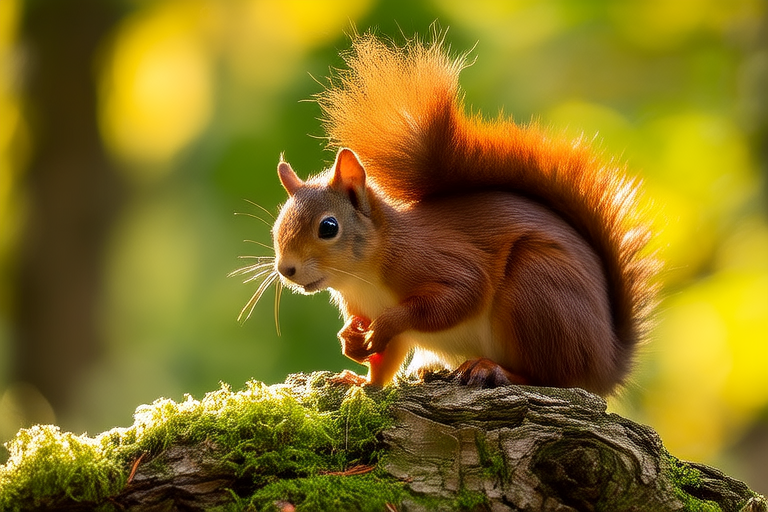Why Oh Why? Unraveling the Mysterious Behavior of Garden Squirrels
Garden squirrels are a common sight in many backyards and parks. Their playful antics and acrobatic skills make them a delight to watch, but they also exhibit behaviors that often puzzle onlookers. From their frenzied digging to their seemingly chaotic storage habits, there’s much more to these creatures than meets the eye. Let’s delve into the biology behind these behaviors, exploring their diet, habitat preferences, and survival instincts.
Common Behaviors and Their Biological Explanations
One of the most noticeable behaviors of garden squirrels is their constant digging. It’s not uncommon to see them burrowing holes in lawns or flower beds. This behavior can be attributed to several factors. Firstly, squirrels are natural foragers, and digging helps them find food sources like insects and seeds hidden beneath the soil. Secondly, they dig to create caches where they store excess food for leaner times. Lastly, squirrels dig to build nests, known as dreys, which provide shelter from predators and harsh weather conditions.
Squirrels are also notorious for their habit of hoarding nuts and seeds. This behavior is deeply rooted in their survival instinct. As scatter-hoarders, they collect and bury multiple food items throughout their territory, ensuring a steady supply during winter months when food is scarce. The process of caching is not random; squirrels have excellent spatial memory, allowing them to retrieve stored food even after long periods.
Daily Routines and Communication Methods
Understanding the daily routine of garden squirrels provides insight into their behavior. These diurnal animals are most active during daylight hours. They spend the majority of their day foraging for food, interacting with other squirrels, and maintaining their territory. Squirrels are highly territorial, marking their boundaries with scent glands and vocalizations.
Communication among squirrels is vital for social interaction and defense against threats. They use a variety of vocalizations, including chirps, barks, and screams, to alert others of danger or to establish dominance. Body language, such as tail flicks and postures, also plays a significant role in their communication. For instance, a bushy tail is a sign of alarm, while a flattened tail indicates submission.
Interactions with Humans and Other Animals
Garden squirrels often come into contact with humans, leading to both positive and negative interactions. While some people enjoy feeding squirrels, it’s important to understand that this can alter their natural behaviors and lead to dependency. Feeding should be done responsibly, offering a balanced diet rather than processed foods. Squirrels also interact with other animals, forming complex relationships within the ecosystem. They compete with birds for bird feeders and may even engage in play with domestic pets.
Misconceptions About Squirrels
There are several misconceptions about garden squirrels that need clarification. One common belief is that all squirrels are pests. In reality, squirrels play a crucial role in seed dispersal, helping to regenerate forests. Another misconception is that squirrels are lazy. Contrary to popular belief, squirrels are industrious creatures, constantly working to ensure their survival. Understanding these facts helps dispel myths and promotes a more accurate view of these animals.
Tips for Coexisting Peacefully with Garden Squirrels
Coexisting peacefully with garden squirrels involves understanding their behavior and providing a supportive environment. To prevent damage to your property, avoid feeding squirrels and secure garbage bins. Plant native species that offer natural food sources, reducing the need for squirrels to raid gardens. Additionally, consider installing barriers like wire mesh around trees to prevent squirrels from accessing roofs.
Effective wildlife management requires a balance between human needs and the well-being of wildlife. By fostering an appreciation for the intricate lives of garden squirrels, we can promote harmonious coexistence. This approach not only benefits the squirrels but also enriches our own connection to nature.
In conclusion, garden squirrels are fascinating creatures with behaviors that are both intriguing and essential for their survival. By delving into their biology, daily routines, and interactions, we gain a deeper understanding of these animals. Armed with this knowledge, we can better appreciate the role of squirrels in our ecosystems and work towards peaceful coexistence.
